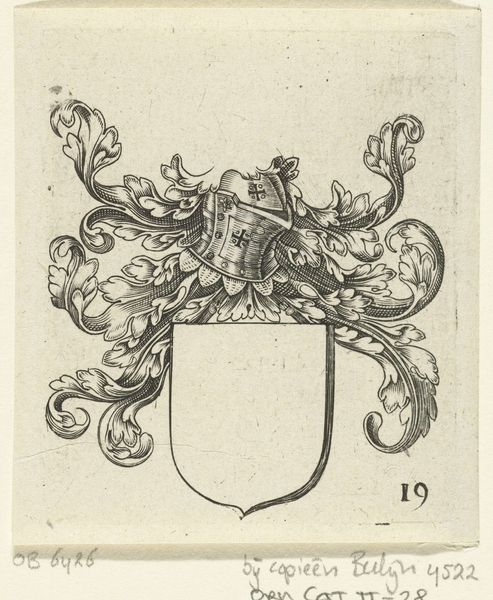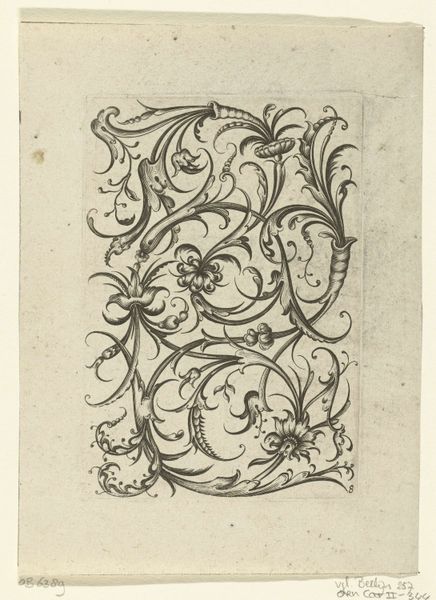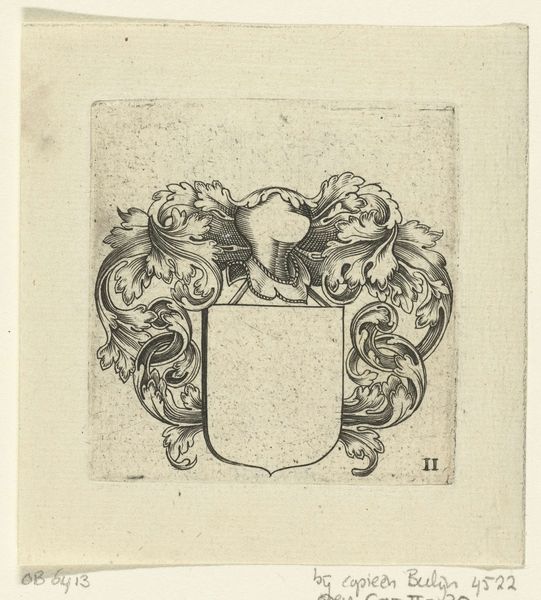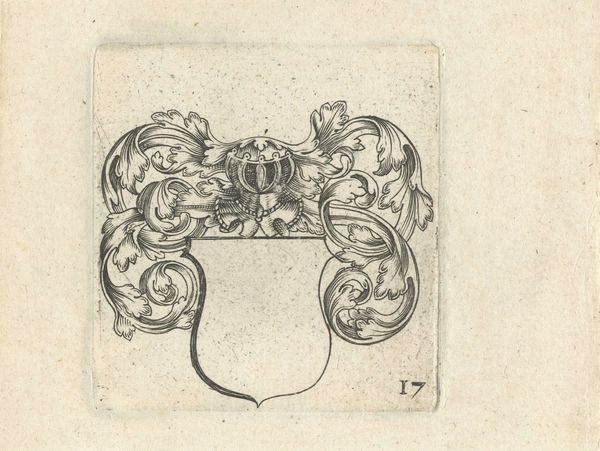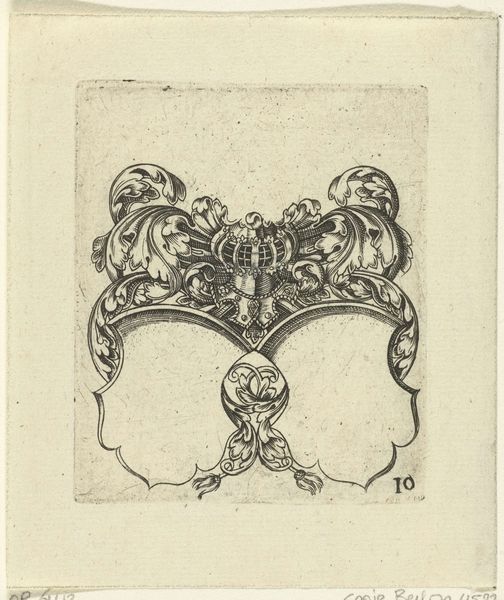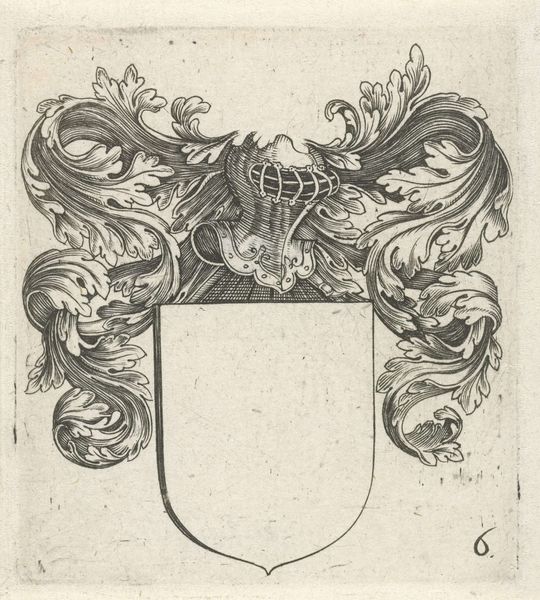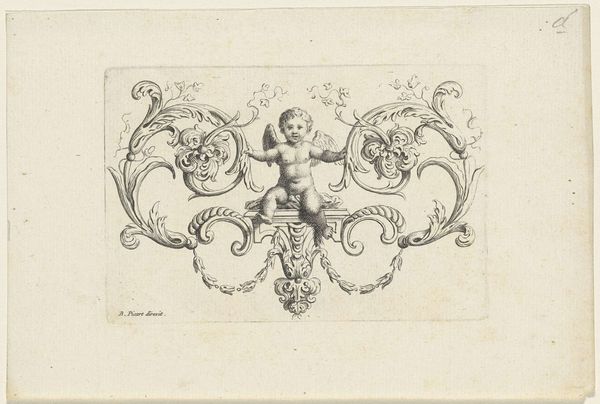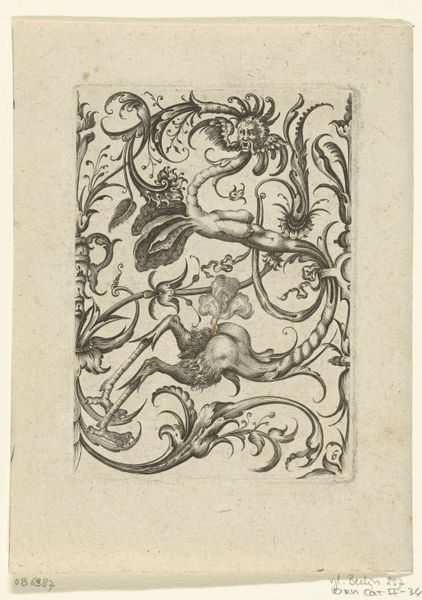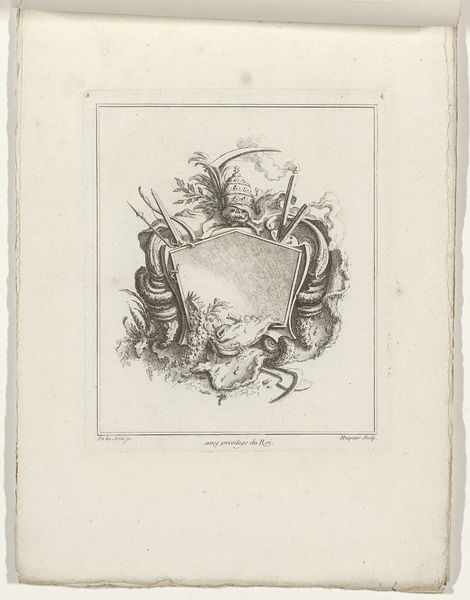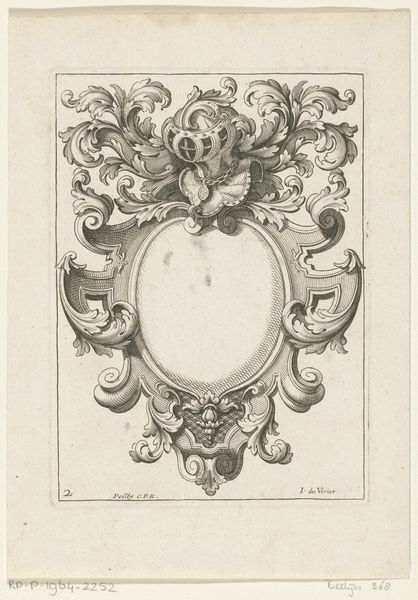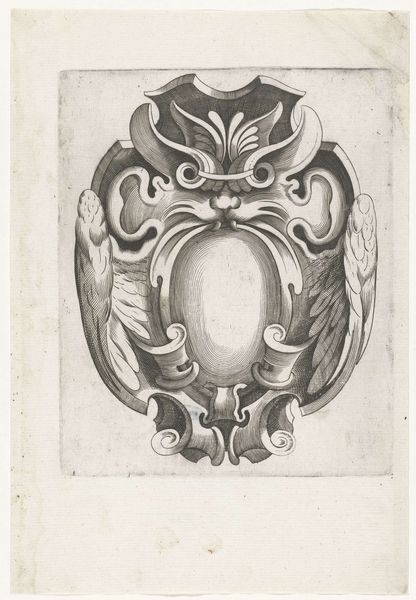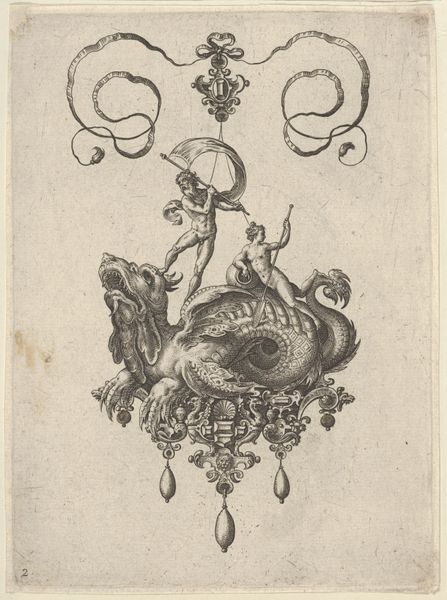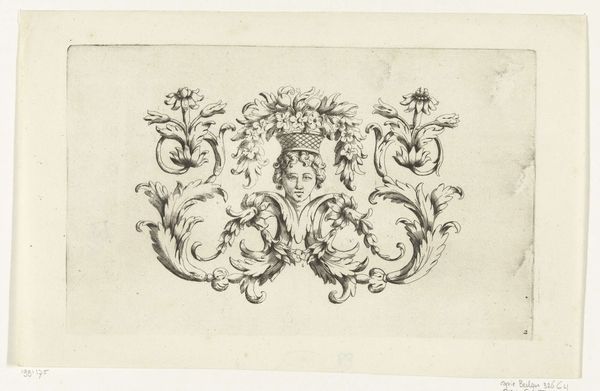
print, engraving
# print
#
geometric
#
line
#
engraving
Dimensions: height 65 mm, width 60 mm
Copyright: Rijks Museum: Open Domain
Editor: So, this print, "Wapenschild met helm," from 1625, is by an anonymous artist and held at the Rijksmuseum. It's all very precisely rendered with these fine lines. I find the blank shield rather…ominous, actually. What can you tell me about it? Curator: An apt observation. The blankness, the emptiness, is pregnant with potential. Heraldry is so much about inherited identity and achieved status, and the void suggests a moment before that identity is fixed. The helmet, traditionally a symbol of protection, and by extension nobility, further reinforces this. But protection from what, and for whom? The elaborate foliage could signify growth and flourishing but can also convey constraint. Do you notice how stylized these elements are? Editor: They’re almost symmetrical, aren't they? Like a mirror image on either side. Curator: Precisely. Reflective symmetry like that often speaks to ideas of balance, order, but also duality, the conscious and unconscious, perhaps even opposing forces within the family itself. Heraldry served to fix identity, but identity is never truly static. This duality makes this print a complex psychological space rather than a simple proclamation of identity. What narratives do you imagine could fill that shield? Editor: So it’s less about who they *are* and more about who they *could be*? The possibilities. I hadn’t considered that. Curator: Exactly! The symbols employed carry potent, evolving connotations, subtly revealing shared historical experience, and the encoding of anxieties around lineage and the projections around aspirational values, and it can often prompt surprising reflection when considering such seemingly formal designs. Editor: That's given me so much to think about regarding the cultural significance embedded in this type of design! Thank you!
Comments
No comments
Be the first to comment and join the conversation on the ultimate creative platform.

